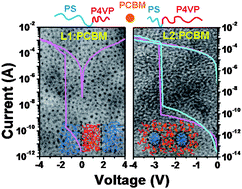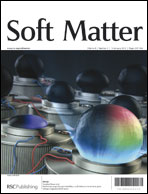Tunable electrical memory characteristics by the morphology of self-assembled block copolymers:PCBM nanocomposite films†
Abstract
Resistive switchable memory devices were fabricated using self-assembled composite thin films of asymmetric poly(styrene-block-4-vinylpyridine) (PS-b-P4VP)


 Please wait while we load your content...
Please wait while we load your content...